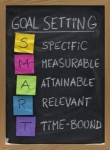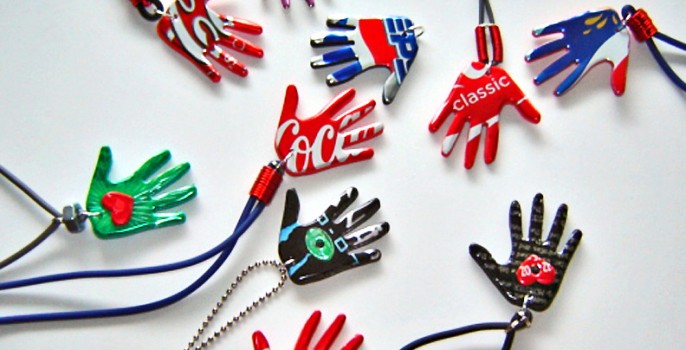Advertising doesn’t have to be hard. The advertising guru over at Flytrap has a five-step plan to make advertising accessible to mere mortals. If you’re struggling to make advertising work for you, read on as she unloads years of marketing experience in one digestible guide.
Let’s get one thing straight – I don’t advertise much; often times you’ll get more bang for your buck spending money elsewhere. That said, I do have a BBA and some 15 years experience in advertising and marketing. This is a summary of what I’ve learned by reading, researching and working in the field. Other strategies might work too, but these are great steps to focus your advertising efforts.
Step 1: Set a goal
Successful advertising is done with well-defined goals. Make the goal of your ad or campaign follow the SMART acronym – specific, measurable, attainable, realistic, and timely.
 Specific. Be more specific than “I want to drive traffic to my site.” Instead, use something like “I want to grow traffic to my site by 20%”. Better yet, seek to sell a specific item in your store. The more specific, the easier it is to measure.
Specific. Be more specific than “I want to drive traffic to my site.” Instead, use something like “I want to grow traffic to my site by 20%”. Better yet, seek to sell a specific item in your store. The more specific, the easier it is to measure.- Measurable. Make sure you can measure the success rate. Yes, traffic grew 20%. No, I did not sell that item.
- Attainable and Realistic. The two kind of go together. Make sure the goal is achievable. Don’t try to sell out your store or quadruple traffic in two days. Set a goal you can reach.
- Timely. Put a time limit on it. Grow traffic 20% within two weeks. Sell this item by the end of the week. Having vague timeframes can leave you feeling underachieved.
Step 2: Define a narrow target market
 Decide specifically who you want to see your ad. Think about Manolo Blahnik shoes. They’re targeting women in the 25-45 age range, but you never see Manolo ads in Redbook – whose target market includes the same age group. That’s because Manolo defines their market more precisely to style-conscious professionals who are not too restricted financially, which doesn’t describe most Redbook readers.
Decide specifically who you want to see your ad. Think about Manolo Blahnik shoes. They’re targeting women in the 25-45 age range, but you never see Manolo ads in Redbook – whose target market includes the same age group. That’s because Manolo defines their market more precisely to style-conscious professionals who are not too restricted financially, which doesn’t describe most Redbook readers.
I wrote an article on this; you can Google for many more. It can be tempting to keep it broad, rather than figuring out your narrow market. This is a mistake – you DO know something about your target market. It’s much less effective to advertise to everyone than to advertise to someone. Figure out who before you throw one cent into advertising.
Step 3: Create an ad
- Understand the flow of a reader’s eyes. The image gets their attention, the headline draws them in, the copy drives them to action. The ad needs to make your product irresistible. You’re competing with other advertisers for attention, and they have more cash than you to invest in advertising. Be original, use unusual graphics and make your offer incredible.
- Sell something specific. No one wants to check out your store. This strategy may work in some places, but product ads are more effective. Create a special offer for your ad – four bars of soap for $10, or 50% off this bracelet.
- Talk benefits, not features. What will the product DO for your customers? Nobody cares that my cards are printed on high quality paper with dense ink. They care that they’ll make your friends laugh. Use the same strategy in your product descriptions.
- Create urgency. Buy it today and receive a free gift! Be one of the first ten buyers and get it for 50% off. It’s one of a kind – once it’s gone, it’s gone. Make it look like they’ll miss out on something incredible if they wait.
-
Don’t be afraid of white space. White space is empty space in your ad, the blank area of any design. No product, no busy graphic, no text. Many companies make the mistake of filling up every inch of space with text or graphics. Make your ad striking, but let it breathe.
If you hire a designer to create your ad, make sure they can give you quantifiable results. The ad generated this much revenue for my client in this time period. Views grew by 200% in two weeks. A beautiful ad doesn’t necessarily generate revenue.
Step 4: Establish frequency
Frequency in the advertising world is how many times an ad must be seen before a response. How many times is enough? I recommend running your ad so that individuals in your target market see it 3-5 times. Impressions don’t always translate to eyeballs, though. With so much clutter out there, your market isn’t going to pay attention to your ad every time it shows. I’d shoot for 9-12 impressions per person, hoping that they consciously notice it 3-5 times.
This is a problem with Facebook Ads. If you have a $50 budget and your market has tens of thousands of people, there’s no way to have any frequency with any one of them. Strictly narrow your market – shoot for less than 1,500 people – so your ad will show to the right people more often.
Step 5: Test
Remember those old high school science experiments? There was a test group and a control group. The test group changed one variable and you compared the results to the control group. This is the fundamental art of testing an ad. I know, I know – testing is a big pain in the ass. I’m sorry to say that testing the ad and the venue will help you isolate what works and what doesn’t.
Create an ad. Change the image to create another ad. Test these two against each other on your venue in exactly the same situation. Whichever one gets you closer to your goal wins. Take the winner and change something else – the headline. Test this new ad against your old winner in the same situation. And so forth. Test the copy and the offer, too. Do the same for other venues as an image that works on one might not work on another.
Try to have at least a few hundred views or responses to an ad before deeming it worthy or unworthy. If you base your results on 10 or 50 responses, your guess about the ad’s effectiveness is less concrete. Try to test over a relevant period of time, too – a day, a week, or a month. People shop and respond differently depending on the time of day, day of the week and even the month.
Did you achieve your goal? If so, you’ve made progress in mastering the art of advertising. If not, keep at it – or get some outside help – until you do. For ruther reading, check out Ogilvy on Advertising.
Get my latest articles straight to your inbox about once a month. Learn how to improve your Etsy shop, boost your sales and discover other sellers from the Etsy community.









Perfect timing — I’ve just started looking at advertising for my shop. Very helpful, thanks!